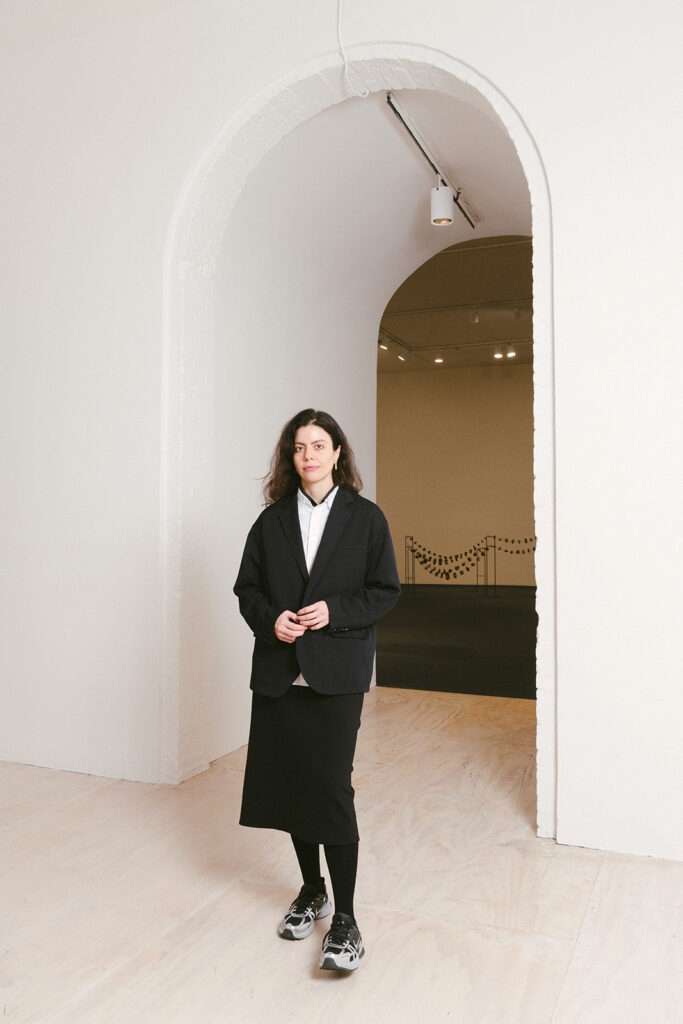#curatorial-practice
#curatorial-practice
[ follow ]
#contemporary-art #archives #architecture #berlin-biennale #art-exhibition #visual-culture-and-representation
fromwww.theguardian.com
1 week agoTurner seascapes and Damien Hurst sharks: Liverpool anniversary exhibition hopes to surprise
Visitors to a major JMW Turner exhibition may well be surprised to see the opening work is by Jeff Koons, and Damien Hirst sharks, a Bridget Riley stripe painting and some Doc Marten boots supplied by the curator herself are also on display. Surprised? That's what we're hoping, said Melissa Gustin, the curator of British art at National Museums Liverpool. But by the end it will all make perfect sense, she hopes. That is the vibe we are after.
UK news
fromThe Art Newspaper - International art news and events
2 weeks agoSan Francisco's Museum of the African Diaspora marks 20 years with a show about Blackness and the cosmos
"You'll also find a primer for the exhibitions," Monetta White, the director and chief executive of MoAD, tells The Art Newspaper. "You'll find a framework, some vocabulary, some definitions of the themes." Meanwhile, she points out, much of the rest of the $500,000 renovation has gone into critical infrastructure improvements visitors will hardly notice, such as lighting upgrades and a new heating, ventilation and air-conditioning system.
Arts
fromAnOther
2 weeks agoInside Clarissa, the Hottest Art Show of Frieze Week
Once a London district made up of neon-lit sex shops and late-night clubs, King's Cross has been polished by regeneration, yet here, the curators draw on the history of the space to choreograph a dialogue between art, architecture, and the city, attempting to explore how contemporary artistic practices might inhabit, and even provoke, the residues of urban change and regeneration.
Arts
fromArchDaily
1 month agoBehind the Scenes, On Display: Self-Curated Journeys through the Museum Archive
The museum and gallery visit has long been a highly curated experience. Visitors are guided through a carefully orchestrated sequence of rooms, with hand-picked works arranged to tell a specific narrative, supported by signage, graphics, scenography, and calibrated lighting. Even the rarely changed exhibitions - the permanent collections, also typically rely on a strong curatorial voice - led by noted artists or curators-to set institutional stance and shape interpretation.
Arts
fromArchDaily
1 month agoFormer MoMA Curator Barry Bergdoll Receives the 2025 Vincent Scully Prize
Barry Bergdoll is the Meyer Schapiro Professor of Art History at Columbia University, where he has taught for more than three decades. He is internationally recognized for his scholarship on the history of modern architecture and for his innovative curatorial projects. From 2007 to 2014, he served as Chief Curator of Architecture and Design at MoMA, organizing influential exhibitions such as Rising Currents: Projects for New York's Waterfront (2009-10), Foreclosed: Rehousing the American Dream (2012), and Latin America in Construction: Architecture 1955-1980 (2015).
Design
fromArchDaily
1 month agoThe Korean Pavilion at the 2025 Venice Biennale Marks 30 Years with "Little Toad, Little Toad: Unbuilding Pavilion"
The Korean Pavilion at the 19th International Architecture Exhibition - La Biennale di Venezia marks its 30th anniversary with "Little Toad, Little Toad: Unbuilding Pavilion," an exhibition commissioned by Arts Council Korea (ARKO) and curated by Curating Architecture Collective (CAC), composed of Chung Dahyoung, Kim Heejung, and Jung Sungkyu. Bringing together architects and artists Kim Hyunjong, Heechan Park, Young Yena, and Lee Dammy, the exhibition critically revisits the pavilion as both a physical structure and a symbolic space, tracing its trajectory since its completion in 1995.
Arts
Arts
fromThe Art Newspaper - International art news and events
2 months agoTimely rediscoveries await at Independent 20th Century
Independent 20th Century fair spotlights overlooked 20th-century artists and re-examines lesser-known works by major figures through international exhibitors and thematic solo presentations.
Arts
fromThe Art Newspaper - International art news and events
2 months ago36th Bienal de Sao Paulo seeks to 'exhibit silence'
The 36th Bienal de São Paulo centers silence, ancestral narratives and non-linear journeys, using Conceição Evaristo's poem to foreground marginalized African diasporic voices.
Artificial intelligence
fromArchDaily
5 months ago"Architecture is Survival": In Conversation with Curator Carlo Ratti at the 2025 Venice Architecture Biennale
The 2025 Venice Architecture Biennale emphasizes interactive engagement through architecture, bridging natural, artificial, and collective intelligences.
[ Load more ]



